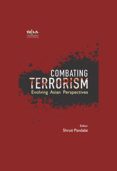India’s Internal Security: Role of State Governments
- Publisher: Pentagon Press
While it is a common knowledge that the Union government has been primarily responsible for maintaining the security of the country, the state governments have also played an important role ensuring public order and security of the citizens. It is said that every conflict starts at the micro level, but if not addressed effectively at that level, it has the potential to blow up and manifest itself as a severe security threat for the entire country. In this respect, various affected state governments in India have attempted to resolve conflicts and build peace at the ground level. While some of these attempts have been successful others have not accomplished the desired results. The book analyses the experiences of six selected states in their efforts to deal with insurgencies and establish sustainable peace. By doing so, it brings to the fore the important role played by state governments in tackling various internal security threats and maintaining peace and order in the country. The book argues in favour of the necessity to consider state governments as a prominent component in India’s conflict resolution and peace building architecture.
- ISBN: 9788196872205,
- Price: Price: ₹ 1295/-
- E-copy available
India’s Approach to Border Management: From Barriers to Bridges
This book attempts to provide a comprehensive understanding of the circumstances which have shaped India’s approach towards its international borders and the framework it has developed to better manage its borders. The book argues that persistence of various cross-border threats and challenges and an absence of robust intra-regional trade among its neighbouring countries forced India to employ a security-centric and unilateral approach to border management with emphasis on hardening the borders to cross-border trade and travel and keeping the border areas underdeveloped to act as a buffer against external conventional threats. However, as India’s economy grew and the country gained more confidence and resources, India started perceiving the borders as bridges rather than barriers. Consequently, greater emphasis was being laid on development of border areas and restoring severed lines of communication with its neighbours through increased investments in building transportation networks both within the border as well as beyond. It also started constructively engaging its neighbours to effectively manage its international borders. Besides discussing the threats and challenges that India faces along the borders, the book aims to develop an understanding of India’s border management practices by analysing various programmes and initiatives such as the raising of border guarding forces; building of physical and electronic fences; the establishment of modern facilities for smoothening legitimate cross-border travel; the development of the border areas through special programmes; and increasing trade and connectivity as well as other cooperative bilateral mechanisms.
- ISBN: 9789391490003 ,
- Price: ₹. 1088/-
- E-copy available
Combating Terrorism: Evolving Asian Perspectives
- Publisher: Pentagon Press
This anthology of essays traverses a wide range of issues exploring the inconsistencies in the global war on terror, and brings together diverse perspectives from eminent academia, practitioners, technologists and civil society from Asia. It takes the conversation beyond the academic realm by delving into first person accounts from authors who are living and fighting terrorism in the heart of conflict zones in the region.
- ISBN: 978-93-86618-81-8,
- Price: ₹.1245/-
- E-copy available









